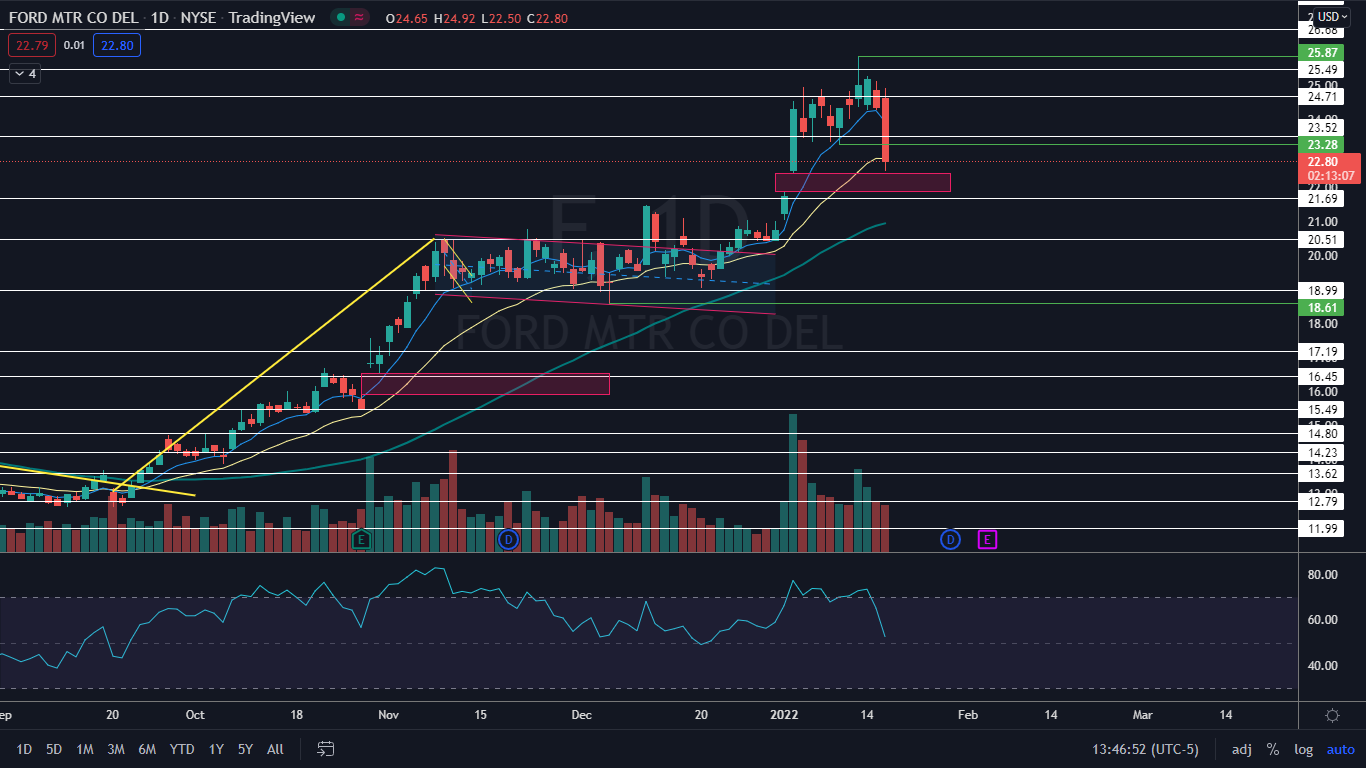Ford Motor Co. shares retreated over 7 percent by Wednesday afternoon as the stock took aim at a lower gap between $21.88 and $22.42 left behind on Jan. 4 when shares shot up almost 12 percent higher from the previous day’s closing price.
If the stock falls to fill the gap and prints a reversal signal near a support level at $21.69, it could provide a solid entry point for investors waiting to take a long position over 2022 as the legacy automaker continues to ramp up its electric vehicle production.
Ford is expected to announce its quarterly earnings results after the closing bell on Feb. 3 and on Tuesday the Detroit-based automaker said it intends to include a number of large special items in its report. This will include Ford’s $8.2 billion gain from its equity investment in Rivian Automotive Inc.
The Ford Chart
On Wednesday, Ford broke bearishly from an inside bar pattern, which likely spooked some investors. The fall lower, however, was made on lower-than-average volume intraday, which suggests that the long-term uptrend is likely still intact.Although Wednesday’s move lower negated the uptrend on the daily chart by falling below the Jan. 11 low-of-day at $23.28, Ford is still trading in a weekly uptrend and was in need of a higher low to continue on its trajectory. For the uptrend to continue, Ford must hold above the most recent weekly higher low that was printed Dec. 6 at $18.61.
The price action allowed Ford’s relative strength index (RSI) to drop from the 70 percent–76 percent range it reached on Jan. 3 and Jan. 14 to the 50 percent level. When a stock’s RSI gets to or exceeds the 70 percent level, it becomes overbought, which can be a sell signal for technical traders. The stock has room on its RSI to move higher again now, which is a bullish signal, although it should be noted the RSI could also fall lower if the stock continues to decline.
Ford is trading below the eight-day and 21-day exponential moving averages (EMAs) but the eight-day EMA is trending above the 21-day, which indicates indecision. If Ford is unable to rise back up above the eight-day EMA over the coming days, it will eventually cross below the 21-day EMA, which would be bearish.
Bulls want to see the move lower consolidated on low volume and then for big bullish volume to come in and push Ford back up over the eight-day EMA. There is resistance above at $23.52 and $24.71.
Bears want to see big bearish volume come in and drop the stock below support at $21.69 and then for momentum to push Ford below the most recent weekly higher low to negate the long-term uptrend. Ford has further support at $20.51 and $18.99.






